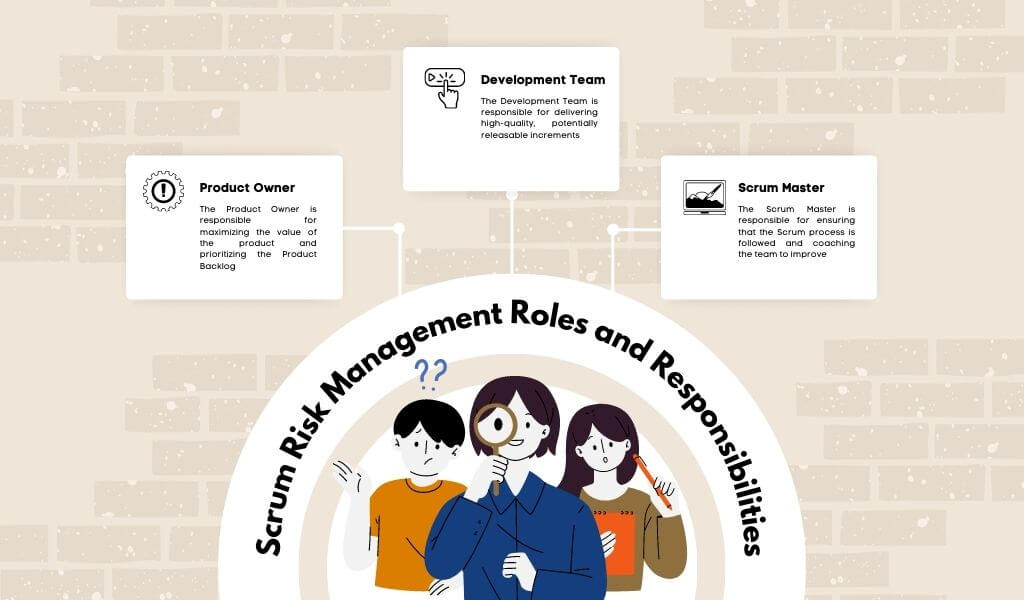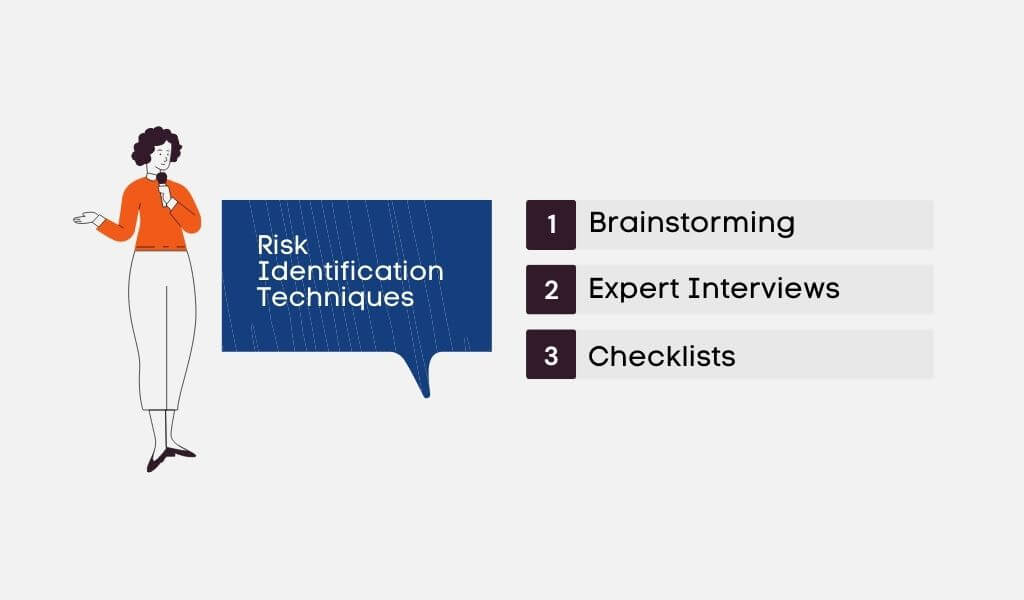When managing any project, effective and proactive risk management is absolutely vital to the success of the project, and this isn’t any different when it comes to projects using the Scrum framework.
While risk management for projects using the traditional predictive method has a structured approach and laid-out processes, Scrum which is an Agile methodology doesn’t really have this.
In fact, some people believe that Agile projects don’t have or need any risk management. That’s however an erroneous belief.
This post explores Scrum risk management, strategies to identify and mitigate project risks, and the role of the Scrum team in managing risks effectively.
Understanding Scrum Risk Management
Before getting into Scrum risk management, it’s critical to understand what risk management comprises.
Risk management is the process of identifying, assessing, and prioritizing potential risks, followed by coordinating and using resources to reduce or control the likelihood and impact of unfavorable events.
While the Scrum Guide doesn’t specifically talk about risk management, the fact is that risk is inherent in every endeavor and must be managed to increase the chances of success.
Risk management in the context of Scrum is an ongoing, proactive activity that the Scrum team incorporates into their everyday actions.
Scrum’s iterative and incremental structure enables teams to identify and handle risks early, ensuring that potential concerns are addressed before they become major difficulties.

Scrum Risk Management Roles and Responsibilities
Risk management in Scrum is a responsibility that is shared among all team members with each Scrum role having a part to play.
Let’s examine how each Scrum role contributes to effective risk management.
The Product Owner
The Product Owner is responsible for maximizing the value of the product and prioritizing the Product Backlog. They should:
- Ensure that risks are considered when prioritizing backlog items.
- Collaborate with the Scrum team to identify and analyze risks.
- Update stakeholders on potential risks and mitigation plans.
The Development Team
The Development Team is responsible for delivering high-quality, potentially releasable increments. They should:
- Identify risks during Sprint Planning and daily stand-ups.
- Work with the Product Owner to assess the risks associated with backlog items.
- Implement risk mitigation strategies and track progress.
The Scrum Master
The Scrum Master is responsible for ensuring that the Scrum process is followed and coaching the team to improve. They should:
- Facilitate risk identification, analysis, and mitigation discussions.
- Encourage the team to address risks proactively.
- Help the team monitor and review risks throughout the project.
Common Risks in Scrum Projects
Some common risks scrum teams may encounter include:
- Unclear requirements: Product backlog items that lack clear descriptions or acceptance criteria can be misinterpreted by the team.
- External dependencies: The team relies on input or resources from outside the team to complete a user story. If that input is delayed, it blocks progress.
- Technical challenges: The team takes on technical spikes or complex stories that end up being more difficult than anticipated, slowing down progress.
- Interruptions: Team members are pulled into other meetings, priorities, or duties outside the sprint, reducing focus and velocity.

Risk Identification in the Scrum Framework
In Scrum, risk management starts at the very beginning during Sprint Planning.
The Scrum team discusses what could go wrong in the sprint and determines actions to mitigate those risks.
The Product Owner shares any known risks or dependencies related to the product backlog items selected for the sprint.
The team also brainstorms risks based on their experience in the domain, technology, or other factors.
Risk Identification Techniques
There are several techniques that Scrum teams can use to identify potential risks, including:
1. Brainstorming
Brainstorming sessions can help the Scrum team identify potential risks by encouraging open discussion and creative thinking.
These sessions can be held during Sprint Planning or at any point in the project when new risks emerge.
2. Expert Interviews
Consulting with experts or stakeholders who have experience in similar projects can uncover risks that the Scrum team might not have considered.
This can be done through informal conversations or formal interviews.
3. Checklists
Using checklists based on industry best practices or previous project experiences can help the team systematically identify common risks associated with their work.
Risk Analysis and Prioritization
Once risks are identified, the Scrum team must analyze and prioritize them. This involves assessing the probability of each risk occurring and estimating its potential impact on the project.
The team can then prioritize risks based on their likelihood and impact, allowing them to focus on the most critical risks.
Scrum Risk Management Strategies
To address risks proactively, the Scrum team implements risk management strategies during Sprint Planning and throughout the sprint. Some key strategies include:
Defining Clear Requirements
For any unclear Product Backlog items, the team works with the product owner to add details and acceptance criteria to the item before bringing it into the sprint.
Identifying and Securing Resource Commitments
For items with external dependencies, the team ensures any required inputs, resources, or commitments are secured before starting work on the item.
Spiking Technical Challenges
If a Product Backlog item contains too many technical unknowns, the team does preliminary investigative work (called a spike) to gain understanding and clarify the path forward before including it fully in the sprint scope.
Setting aside Contingency Time
The team budgets a percentage of the sprint (e.g. 10-15%) as contingency time in case risks emerge or priorities shift. Team members also reserve slack time in their individual schedules for interruptions.
Swarming
When blockers emerge or unexpected work arises, the entire team comes together to solve issues as quickly as possible, which helps avoid delays and keeps the sprint on track.
Scrum Risk Mitigation Strategies
There are several strategies that Scrum teams can use to mitigate risks, including:
Avoidance
Avoidance involves changing the project plan or design to eliminate the risk entirely. This might involve selecting a different technology or altering the scope of the project.
Reduction
Risk reduction focuses on minimizing the probability or impact of a risk. This might involve implementing additional quality control measures or providing additional training to team members.
Transfer
Transferring risk involves shifting responsibility for the risk to another party, such as a vendor or insurance company.
This might involve outsourcing a risky component of the project or purchasing insurance to cover potential losses.
Acceptance
Risk acceptance involves acknowledging that a risk exists and choosing to accept the potential consequences.
This is often done when the cost of mitigating the risk outweighs the potential benefits.
Monitoring and Reviewing Risks in Scrum
During the daily Scrum meeting, regular Sprint Reviews, and Sprint Retrospectives, the Scrum team continually monitors risks and their mitigation strategies.
For each risk, the team tracks:
- Risk status: Open (not addressed yet), in progress (actively being mitigated), or closed (addressed).
- Impact level: The potential effect on sprint scope, schedule, resources, or costs if the risk becomes an issue.
- Mitigation strategy: The approach the team is taking to avoid or reduce the risk.
- Mitigation progress: How the chosen strategy is working and any needed changes or next steps.
The Product Owner also monitors risks and progress during the sprint to avoid surprises. They step in to provide clarification or help address issues as soon as possible.
Constant monitoring and quick action keep risks from escalating and help ensure a successful sprint.
Lessons Learned and Continuous Improvement
At the end of each sprint, the Scrum team holds a retrospective meeting to discuss what went well, what could be improved, and lessons learned.
Risk management is a key part of this discussion. The team reviews:
- Which risks emerged during the sprint and how effective the mitigation strategies were.
- Risks that were overlooked or underestimated and should have been addressed proactively.
- Improvements to the team’s risk identification and management process.
Based on this discussion, the team adds actions to strengthen its risk approach for future sprints. Some examples include:
- Revising the list of common risks or profiles for different types of product backlog items. The expanded list helps raise awareness of risks during Sprint Planning.
- Allocating more time for risk brainstorming during Sprint Planning or holding separate risk planning sessions if needed for complex sprints.
- Standardizing the format and process for tracking and monitoring risks throughout the sprint, such as using a risk board on the team wiki or project management tool.
- Defining guidelines for when Product Backlog items require spikes before inclusion in a sprint. The team learns from experience which types of items tend to be riskier and need advanced investigation.
- Identifying team members responsible for monitoring certain types of risk or risk mitigation approaches. Distributing ownership avoids risks being overlooked.
- Bringing in experts from outside the team to provide guidance on specialized risks. Outside input helps the team address risks more proactively.
Continuously improving how the team manages risks sprint-to-sprint is key to minimizing threats and optimizing productivity.
No process is perfect, but an effective Scrum team will adapt its risk approach over time based on successes, failures, and lessons learned during each sprint.
With regular inspection and adaptation, risk management becomes simpler and more effective over time.
Conclusion
Scrum risk management is a crucial aspect of any successful Scrum project.
By understanding the roles and responsibilities of each team member, employing effective risk identification techniques, analyzing and prioritizing risks, implementing appropriate mitigation strategies, and continuously monitoring and reviewing risks, Scrum teams can proactively address potential issues before they escalate.
In this comprehensive guide, we’ve covered the essential aspects of Scrum risk management. By incorporating these practices into your Scrum framework, you can ensure your project’s success and deliver valuable, high-quality products to your stakeholders.





